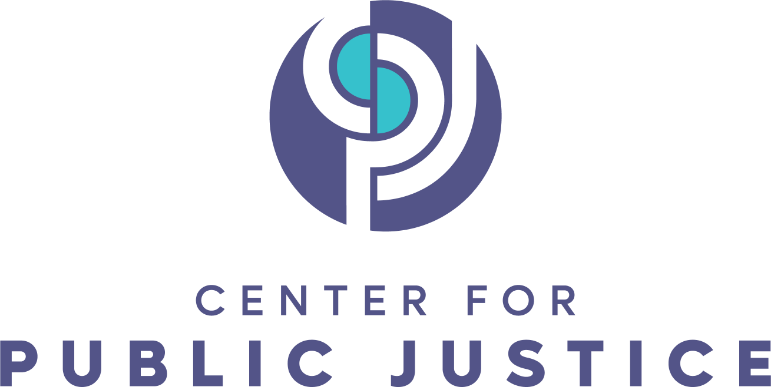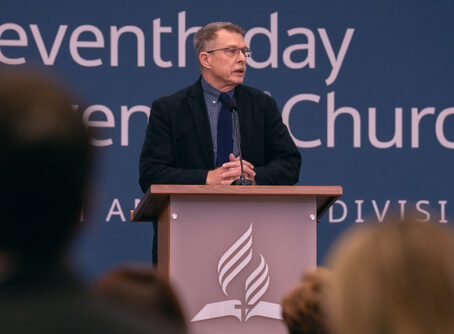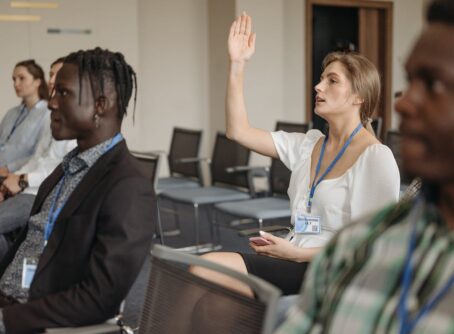
The U.S. prison system is not designed for rehabilitation or for youth with substance use disorders (SUDs). For these youth, contact with the justice system can signify a dead end to what could have been a bright future. While it may be easy to think that those who fit into this category are few and far between, current data shows that youth with SUDs make up a significant portion of the incarcerated population. Although only roughly 12% of all juvenile arrests annually are for drug-related charges, one study of justice-involved youths found that more than 90% of youth in the justice system use illicit drugs and as many as 75% have an SUD. In an ideal world, the healthcare system would catch struggling youth and offer them treatment, but many come into contact with the justice system first, which is poorly equipped to address their needs. Allowing these youth to be taken into the justice system doesn’t provide the rehabilitation they need, but rather allows underlying factors that encourage criminal behavior to continue. Those with SUDs are four times more likely to commit another crime upon release, leading to a cycle of addiction, crime, and prison – one that won’t be solved by turning 18. As Christians, it is our civic duty to advocate for developmentally appropriate, evidence-based interventions for justice-involved youth to prevent further damage to their lives and to our communities.
Many current concerns with the court system’s failure to properly regulate substance abuse trace back to 51 years ago, when President Richard Nixon declared a “war on drugs;” designating drug abuse as “public enemy number one.” His initiative, powered by increased federal funding to reduce the illegal drug trade in the U.S., led to a significant increase in those imprisoned for drug offenses, which has continued to intensify. Now, there are over one million drug-related arrests in the U.S. annually, and the majority of these arrests are for possession, not sale. The number of these arrests is exacerbated by racial bias, though Americans use and sell drugs at the same rate, minorities are disproportionally targeted. This harms minority communities in the U.S.
It wouldn’t be a war without victims, and the consequences of a drug offense are specifically designed to be more substantial than those of other crimes. When someone is convicted of a drug charge, some consequences pertain only to this specific class of crime: suspension of driver’s license, denial of food stamps, loss of federal student aid and loss of welfare benefits are just a few examples, although these policies vary state by state. While these measures are intended to punish criminals, taking away means of transportation, food, and the opportunity to pursue higher education and housing is not driving people away from drugs, but detrimentally preventing recovery by removing support entirely. This makes the disproportionate targeting of minorities even more shocking because it demonstrates that those arrested for drug-related offenses are affected well beyond their sentence.
These consequences are all the more daunting when we recognize the number of youth involved. In the United States, around 70% of juveniles who are being arrested have had previous involvement with drugs and over 33% have substance use disorders.
Substance abuse has a unique effect on the adolescent brain, leading to a lowered ability to effectively reason while decision-making and making these adolescents uniquely susceptible to SUDs. Many of those involved in the juvenile justice system started using substances earlier on in their lives, something that is correlated with an earlier presentation of substance abuse disorders and more detrimental outcomes at a younger age. By the time justice-involved youth become emerging adults, 91.3% of males and 78.5% of females have at some point had an SUD.
The unintended effects of the “war on drugs” are permanently scarring youth in America and disproportionately affecting the communities of color in the U.S. As Christians, we are uniquely equipped with the Holy Spirit, who empowers us to recognize injustice and fight for change on the part of both the government and citizens. The Center for Public Justice’s Principle on Government offers a framework for engaging the world on this issue; Government is authorized by God not only to restrain sin, but also to play a positive role in creating flourishing communities.
An Alternative to Incarceration: Youth Diversion Programs
While the government has established that minors need to be treated differently than adults since they are more malleable and are in a distinct developmental phase, many youths with SUDs still end up in an ineffective juvenile system. An underutilized alternative is youth diversion programs. To recognize whether or not a youth would benefit from diversion, their case manager needs to be aware of their struggle with substances. Strengthening youth diversion programs through more intentional case management and immediate screenings for juveniles during their case proceedings is a step the government can take to decrease recidivism rates and help youth sustainably flourish.
Although the diversion system is not operating at its full potential, several programs have been effective in combating SUDs amongst system-involved youths. Programs like the Law Enforcement Assisted Diversion program and the Police Assisted Addiction and Recovery Initiative (PAARI) encourage officers to divert individuals to community-based programs that strengthen life skills, help youth find jobs, and provide drug treatment, housing, and educational programs. PAARI observed a 25% reduction in crimes associated with addiction when their program was implemented. While SUDs pave the way for youths to enter the criminal justice system, SUD treatment has the opposite effect and it is most effective when treatment is provided in the communities where youth live. Increased implementation of community-based diversion programs may keep youths out of jail and get them evidence-based, developmentally appropriate help.
Remodeling and Implementing Effective Treatment
Diversion programs will not be an appropriate solution for all youth offenders. For those who are not diverted into a substance use disorder treatment program, there are currently few developmentally appropriate treatments available. Less than half of juvenile detention centers in the United States offer SUD treatment beyond education programs. This statistic demonstrates insufficient preparedness to address the issue in a way that will allow youth to flourish once they are outside of the prison system.
In response, some groups have recognized this gap and designed programs to help youth recover from SUDs. One of these is the Arches Transformative Mentoring program (Arches) based in New York City which involves mentorship, interactive journaling, and voluntary treatment, all of which are more effective with youth. Arches has shown significant reductions in recidivism rates in its participants. Christian citizens ought to research their city’s treatment of justice-involved youths and young adults with SUDs and advocate for evidence-based policies that rehabilitate youth offenders and prepare them to reenter their communities.
In and Out of the System: Addressing Bias and Recognizing Where it Falls Short
Government can also help justice-involved youth struggling with SUDs more successfully by recognizing the biases within the juvenile justice system when it comes to sentencing and access to SUD treatment. These biases funnel people of color into the criminal justice system and continue to provide barriers to SUD treatment when in facilities. Studies have found that youth of color and women are significantly less likely to be prescribed medication as a part of their SUD treatment process, something that is already difficult to receive because of preconceptions about those with substance abuse disorders and an expansive incomplete understanding of the importance of medicinal treatments as a part of SUD treatment. Black youth are more likely to be arrested for drug offenses, but less likely to use and possess drugs than white youth. Youth of color are also less likely to be diverted from the justice system to treatment facilities, something vital to sustainably address the root issues contributing to the crimes. By fully acknowledging these disparities and working to address the overrepresentation of youth of color within the system, the government can not only better the juvenile justice system but fight systemic racism that has become built into their work.
A Part to Play for Our Communities
According to the Center for Public Justice, a guiding principle of the Public Justice Framework is that “much of what contributes to human flourishing is also not the government’s responsibility.” Citizens share the responsibility to promote human flourishing in their communities, through both civic engagement and participation in non-governmental organizations. There are a variety of organizations that have partnered with the government to offer substance abuse treatment programs to youth offenders. One of these is Reclaiming Futures, whose work with local law enforcement focuses on implementing programs that model, “developmentally appropriate and evidence-based treatment responses sustained by community support.” Shatterproof is another example of an organization working to end the devastation of SUDs in all ages by advocating for the establishment of a national standard of care for addiction treatment. An accessible way anyone can help fight the addiction crisis is by educating oneself and others on the reality of SUDs and the stigmas that surround them. Studies have found that “the value of faith-oriented approaches to substance abuse prevention and recovery is indisputable.” Organizations like Teen Challenge use faith-based residential programs, helping their patients fight addiction with the awareness that an all-knowing God loves them and created them with a purpose.
There are government programs that have recognized publicly that the role of faith and faith organizations and communities in SUD treatment is vital. The Substance Abuse and Mental Health Services Administration (SAMHSA) — a branch of the U.S. Department of Health and Human Services — has been an instigator of positive change within the justice system by addressing workforce shortages for those specialized in behavioral health and bolstering communities to serve youth during their healing process. SAMHSA has also recognized that the government may not always be equipped to provide the best solutions, and their Faith-Based and Community Initiatives provide grant opportunities to faith-based organizations focused on meeting the needs of those struggling with SUDs in their communities.
As Christians, we recognize that “public enemy number one” is not drug abuse or the corrupted justice system, but the enemy who comes to steal, kill, and destroy (John 10:10). In our own churches, we can emulate the work of nonprofit and other civil society organizations by making sure SUDs, the pains of addiction, and the susceptibility of youth are consistently a part of the conversations we are having and ministries we are developing. Many churches already have programs focused on fighting addiction in adults, but today’s youth can easily be overlooked for such heavy topics. It can be easy to turn a blind eye to problems that do not seem to affect us directly, but as believers, we have the commission to step beyond what affects us and extend a hand to our neighbor. Just as Jesus said in Mark 2:17, “It is not the healthy who need a doctor, but the sick. I have not come to call the righteous, but sinners.” While we are not all physicians or psychiatrists capable of treating substance abuse disorders, we are all citizens capable of—even responsible for—education and advocacy. Believers have the opportunity to partner with organizations like Shatterproof and local ministries to help step into the gap that is keeping justice-involved youths shackled. As Christians, we need to recognize that justice-involved youth and young adults are not dangerous criminals we need protection from, but developing human beings who need our protection. It is not simply the role of the government nor the role of the citizen to combat substance abuse within the juvenile justice system, but both play a vital role in making significant, sustainable changes to help youth in America incarcerated by addiction.
Victoria Jones is a Legal Advocate at the Family Abuse Center and works with trauma survivors.





